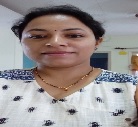
Aparna Gupta
SGT University, India
Title: Motor imagery for gait and balance rehabilitation in post stroke hemiparesis
Biography
Biography: Aparna Gupta
Abstract
Researchers have been exploring the brain structures involved in motor imagery for over two decades. Understanding brain plasticity after stroke is important in developing rehab strategies. MI is a cognitive process in which a subject imagines that he/she performs a movement without actually performing the movement and without ever tensing the muscles. MI involves activation of neural system while a person imagines performing a task or body. A plethora of neuroimaging studies have demonstrated that the cortical and subcortical regions activated during MI tasks substantially overlap with those involved in movement execution. Generally portions of cerebral cortex considered to be involved with motor control include the primary motor cortex (M1), supplementary motor area (SMA) and pee motor cortex(PMC). MI induced brain activity typically involves premofor, SMAs and PMCs. Objective was to evaluate effect of MI on gait and balance in stroke patients and the design was RCT. A total of 30 patients with gait and balance dysfunction after first ever stroke were randomly allocated to a motor imagery training group and a conventional group. MI group relieved 5 days each in 3 weeks mental practice followed by conventional therapy and control group relieved 5 days each in 3 weeks only conventional therapy/exercises. MI group was shown a video showing normal movements before each session. Each week had a separate video comprising normal movements. Patients viewed and imagined the same. Videos were shown and repeated to help patients imagine the right and specific movements influencing their gait and balance. Motor imagery was evaluated based on questionnaire KVIQ and gait and balance were assessed based on tinetti performance oriented mobility assessment scale. MI was found significantly useful improving gait and balance in post stroke hemiparetic population.
